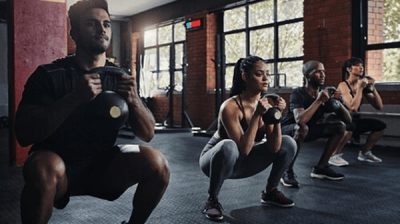 When you think of aches and pains, the knees are a key body part that probably comes to mind. They are complicated and essential joints in our bodies, and a lot can go wrong with them, which has a negative impact on quality of life. Physical Therapist Dr. Carrie Jose offers these six tips to keeping your knees – and the rest of you – healthy: via Yahoo.com:
When you think of aches and pains, the knees are a key body part that probably comes to mind. They are complicated and essential joints in our bodies, and a lot can go wrong with them, which has a negative impact on quality of life. Physical Therapist Dr. Carrie Jose offers these six tips to keeping your knees – and the rest of you – healthy: via Yahoo.com:
Strengthen your hips and core
Your hips and core provide essential support and stability to your entire body, but especially your lower limbs and knees. Strengthening these important muscle groups is key for not only relieving knee pain - but preventing it as well.
Weakness or imbalance in your hips and core can lead to poor alignment and compensatory stress on your knees during movements like walking, running, or squatting…
Get (and stay) mobile
Muscles don’t work as well when the joint they are in charge of moving doesn’t have full and free mobility… Good and optimized joint mobility will enhance your body’s ability to move efficiently and with proper body mechanics, thus, reducing the strain on your knees.
By increasing (and maintaining) your flexibility and range of motion, your body will move more freely and distribute forces more evenly throughout your joints and muscles (including your knees).
Don’t sit so much
For knees in particular, prolonged periods of sitting can cause stiffness and lead to poor blood circulation in and around your knee joint. That’s why sometimes after sitting for a while, you can experience sharp stabbing pain in your knee when you go to move.
Sitting for extended periods can also lead to tightness in the hip flexors and hamstrings, which can negatively impact knee alignment and function. When you take regular breaks to stand, stretch, and move around - you relieve knee pressure, maintain good joint mobility, and prevent muscle imbalances that (when left unaddressed) can gradually creep up and ruin your summer.
Keep moving
Regular movement and exercise helps to stimulate blood flow. If you’ve got inflammation in your knees causing pain, good blood flow helps to actually reduce inflammation by delivering essential nutrients and oxygen while also removing waste products.
If your knees are on the arthritic side, engaging in low-impact exercises like walking, swimming, cycling, or Pilates can help build strength and endurance around your knees without putting excessive stress on your joints. Regular movement also helps lubricate your knee joints, which can reduce friction and discomfort during summer activities...
Wear sensible footwear
The right (or wrong) footwear can greatly impact how your knees feel when walking, running, or standing. Proper footwear provides the necessary support and cushioning to reduce knee strain. And depending on the mechanics of your feet and ankles, the right footwear can help improve overall alignment and stability…
By choosing shoes that prioritize comfort, support, and proper alignment, you can effectively reduce knee pain and enhance overall joint health for a happy and active summer.
Work on your balance
Good balance is crucial for stability, control during movement... When you work on your balance, it helps reduce knee strain by ensuring your postural muscles, feet, and ankles work together to distribute forces evenly.
Without this coordination, your knees overcompensate and suffer. When you make a conscious effort to improve and maintain balance - it will help to decrease the stress on your knees by getting other joints and muscle groups to “join the party.”
You can read the full article here.
If you already have knee issues, you know it can be hard to remain physically active. Luckily, there are special and modified exercises you can try to help alleviate the pain. And many of Dr. Jose’s tips still apply. So get up and move!